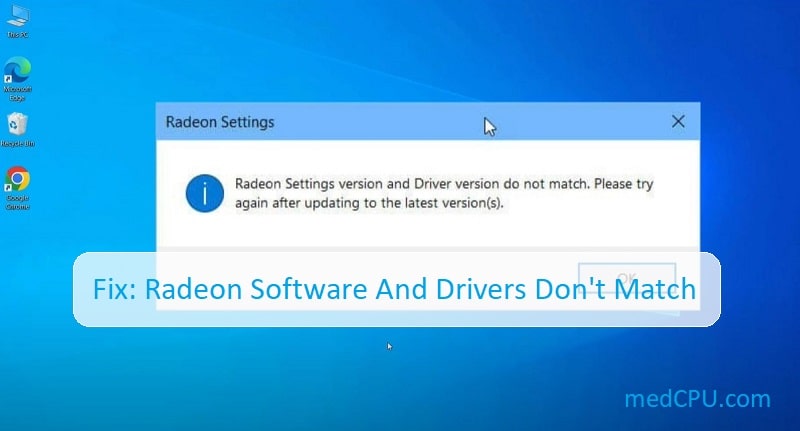When playing a video game, you might have heard of HDR gaming. High-dynamic-range (HDR) gaming is one of the newest technologies in the video game industry.
Games with HDR offer players high-resolution graphics, clearer reflections, and brighter or darker levels depending on the environment. Some games have a photo mode feature that allows players to capture images for their personal collection.
In this guide, MedCPU will explain What Is Hdr Gaming in detail. Read on to find out more.
What is HDR gaming?
The monitor’s ability to display a more excellent range of color and contrast than an SDR (Standard Dynamic Range) display is called High-Dynamic Resolution (HDR). The display can display richer blacks and brighter colors, resulting in images closer to life.
This requires a panel that can display a wider range of colors and brightness. An HDR feature is a great option.
What do you need for HDR?
You will first need an HDR-compatible TV. TVs are at the forefront of incorporating HDR technology. Most modern televisions support one version of this feature. We’ll be discussing the differences shortly.
You will also need an HDR source. This refers to the media that provides the image to your display. This image source can be a compatible Bluray player, video streaming service, or a PC.
HDR is not possible unless the source provides additional color information. While you will still see the image on display, you won’t get the HDR benefits, even if your display is HDR-capable. This is similar to the resolution. If you don’t provide a 4K picture, you won’t be able to see one on your display, even if it’s compatible with 4K.
Publishers embrace HDR in many formats, including video streaming services, UHD Bluray movies, and many consoles and PC gaming titles. Although not all PC games support HDR, there are many high-profile titles like Cyberpunk 2077 and Star Wars(tm), Squadrons, and Marvel’s Avengers, which support it.
HDR for console and PC gaming

For a great HDR experience, there are many pieces. The HDR content that you are trying to view (in this instance, games), the hardware that sends that HDR content (your console or computer graphics processor), the cable is carrying that signal, the display receiving and processing that HDR content, and the format of HDR being used (Dolby Vision or HDR10 or HLG), are all essential pieces. Each component must work together to get the best HDR experience.
It’s much easier to make things work on consoles connected to a TV. Both the Xbox One S (and Xbox One X) support HDR10. All PS4 models that have system software 4.0 or later also support HDR10. Xbox One S and X now support Dolby Vision, a more advanced version of Dolby Vision.
It’s simple for console gamers using Sony and Microsoft hardware to find compatible TVs, with HDR10 being a standard and Dolby vision not challenging to find.
As long as your games support HDR, HDR gaming is accessible. It doesn’t take much to convert your existing console to HDR-ready. You can also find a compatible TV for it.
It’s not as simple for PC users, mainly since monitors are still behind HDR standardization and the adoption of TVs. Nvidia and AMD have made most of the latest PC graphics cards available for HDR support.
Gamers with older cards will still need to upgrade. Rock Paper Shotgun provides a list of HDR-ready GPUs as well as the cables required to support HDR. It isn’t always easy to get Windows and other games to support HDR, even with a powerful graphics card and an HDR-ready monitor. Not all games support HDR.
>>> Read also: How To Measure Laptop Screen? Top Full Guide 2022
Color and brightness
It can be challenging to talk about the color range quickly. It is important to remember that the greater the color range, the higher the color accuracy of a displayed image.
HDR uses Wide Color Gamut (WCG), which means that the display can show more colors. Consider an example: An onscreen plant. WCG will give you more options for colors and allow the display to see more of the real world.
though HDR displays don’t display as many colors as the human eye can see, they are still noticeable improvements over SDR (standard dynamic range).
A display’s brightness or luminescence is measured in candela per sq meter. Also known as nits, A display’s brightness is determined by its ability to achieve a higher number of nits. HDR is dependent on nits. The brightness of the display impacts the contrast ratio (or how many colors it can produce).
This means that a display of 400 nits cannot get as bright or as bright as one capable of 1000 nits. It also has a narrower range of contrast to choose from.
An HDR display is often used to refer to the brightness of a monitor in the description for the HDR format. An HDR 400-capable display, for example, has a maximum peak brightness of 400 nits. Displays rated HDR 1000 have a brighter display, meaning a wider contrast spectrum and theoretically a more realistic comparison.
HDR Formats

HDR10
HDR10, the most popular variant of HDR10, is the most likely to experience HDR as an avid gamer. Both console and PC setups support HDR10. 10 stands for the dynamic range’s bit depth. Most TVs and monitors with HDR10 compatibility are compatible.
HDR10+
HDR10+ is a joint venture between Amazon Video and Samsung. It squeezes more out of HDR10 by adding metadata to the stream. This metadata can be used to make visual adjustments on the fly, keeping them as beautiful as possible. Although HDR10+ acceptance is growing slowly, it will most likely only affect UHD home theater setups.
Dolby Vision
Dolby Laboratories created Dolby Vision, a new HDR format. It boasts a higher bit depth (12) which allows for brighter and more vivid colors. Most major TV brands support Dolby’s vision.
This means that console gamers have once again the option to use Dolby Vision output on their Xbox One S or Xbox One X. PlayStation does not yet support Dolby Vision.
>>> Read More: Matte Vs Glossy Laptop Screen – Which Should You Get? 2022
FAQs

What are the advantages of HDR in Gaming?
If video games are too dark, the player might not be able to make out the obstacles in the game. This can be quite frustrating. With HDR technology, the player can better see what is happening on the screen.
This is especially important for things that are moving quickly on the screen. HDR increases the contrast between lights and darks, so it can be easier to spot objects.
HDR also gives a wider color range to the image. It can create more realistic colors on the screen. There is a more realistic sense of depth on the screen.
What are the drawbacks of HDR gaming?
Unlike traditional pixel art and graphics, with HDR graphics the colors are not selected with a certain intent in mind. Colors chosen for a scene might be chosen randomly, which makes this type of gaming difficult.
HDR graphics can cause increased strain on the human eye when there is a high level of light and dark contrast in the same area.
What are the requirements for HDR gaming?
The requirement for HDR gaming is at least an HDMI 2.0 connection with HDCP 2.2, which means that it’s not compatible with most older devices. Some devices may require HDR10 capability, which is displayed with a logo on the device box.
What is the difference between HDR and 4K?
High Dynamic Range (HDR) refers to the ratio of the brightest color to the darkest color within an image. This can create a more realistic, clearer image with colors that are more vivid and eye-catching.
The difference between HDR and 4K is that HDR refers to the range of colors within an image, whereas 4K is the number of pixels on the screen.
What is the difference between SDR and HDR?
The difference between SDR and HDR is the contrast ratio. HDR technology tries to recreate what the human eye can see with an amazing amount of detail, but with different contrasts of light and dark.
SDR (Standard Dynamic Range) tries to recreate what the human eye can see with less detail, but with equal contrasts of light and dark.
Conclusion
HDR can have a significant impact on image quality and is often more obvious than other image metrics like resolution. HDR will continue to be the standard for display technology, with color accuracy and wider contrast ratio spectrums expected to increase as HDR becomes more mainstream.
Thanks for reading our guide! Please feel free to leave your questions, comments, or suggestions below.

Eyal Ephrat serves as the co-founder and CEO of medCPU.com, where technology is making significant strides in the field of medicine. Through his experience in purchasing PC and laptop equipment and various other tech products, Eyal Ephrat contributes valuable insights to medCPU’s mission.





